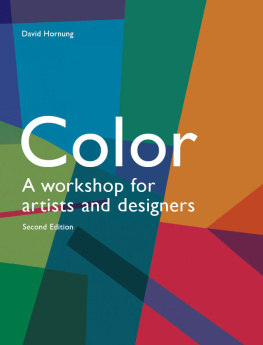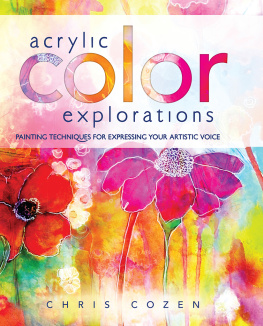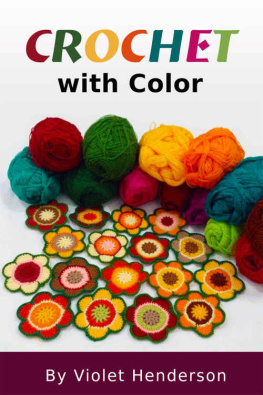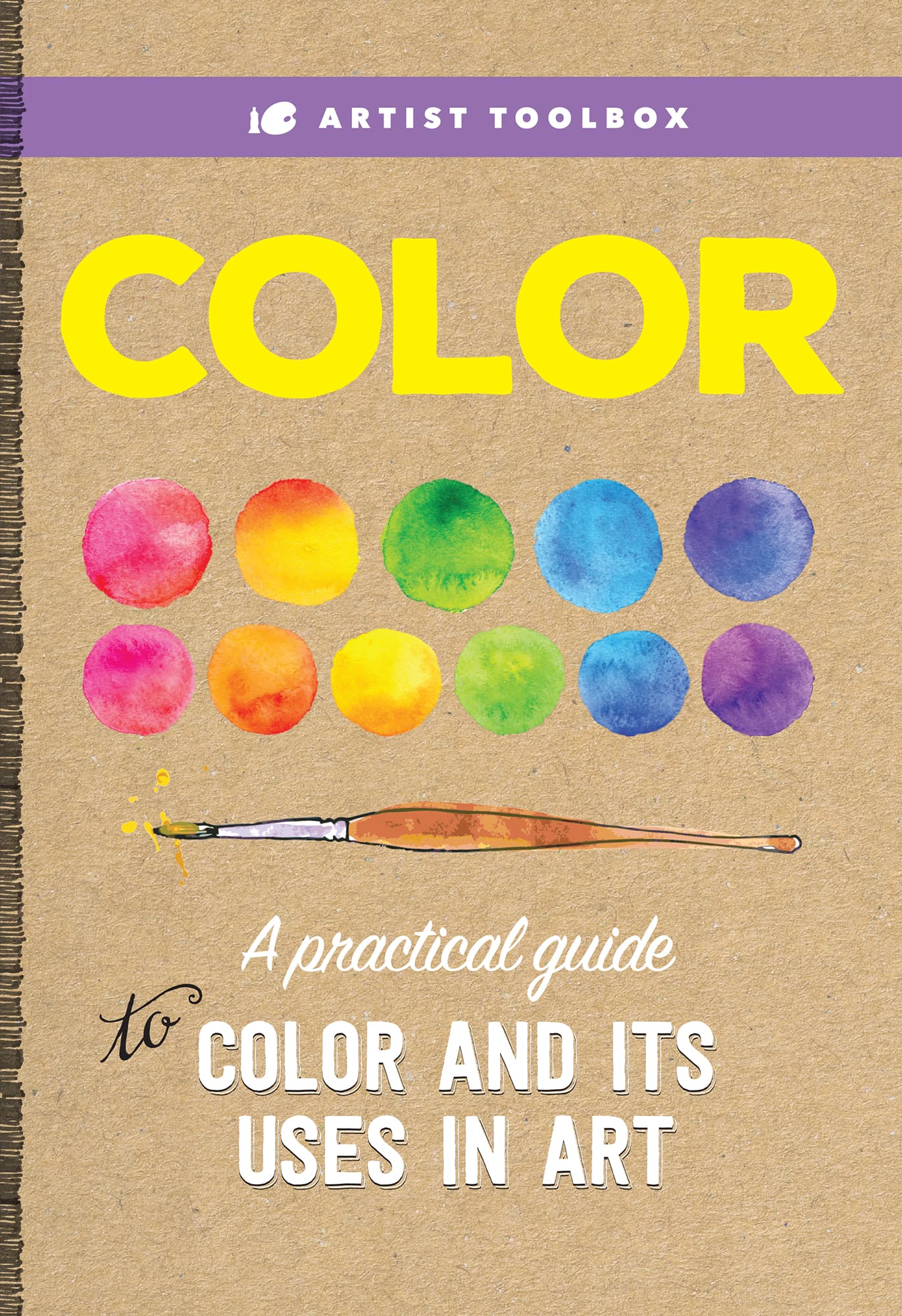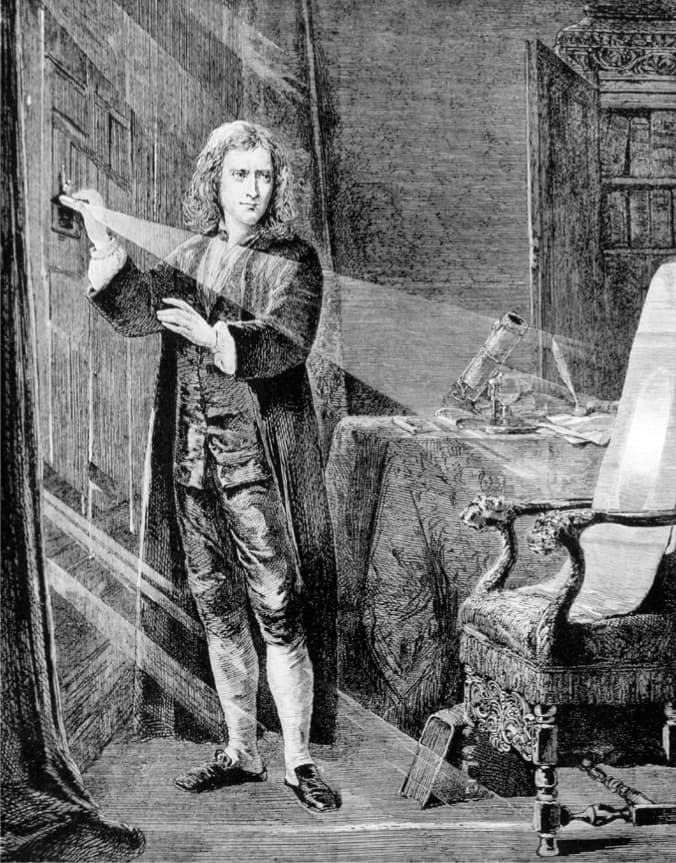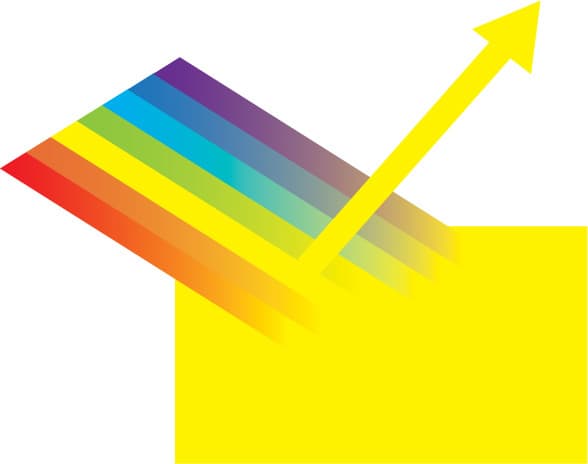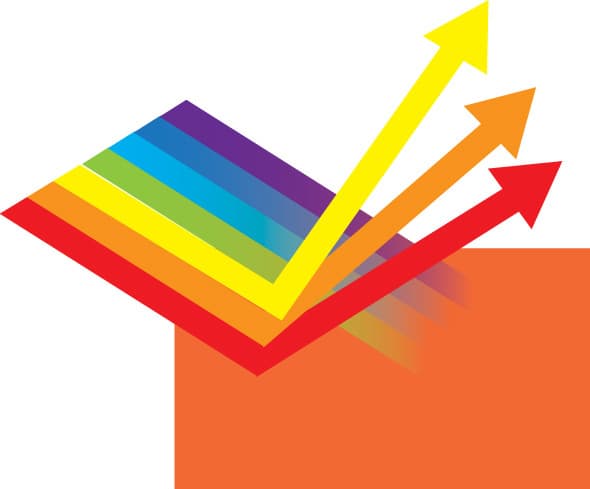COLOR
A practical guide to
COLOR AND ITS USES IN ART

INTRODUCTION
Color is one of the most fascinating elements of art. It functions alongside line, shape, form, value, texture, and space to create dynamic, meaningful works of art. More than any other element, color shapes the way we see the world by evoking emotionit can be stimulating, calming, unsettling, or mysterious. Color is also an area of scientific study. From how the eye perceives color wavelengths to the chemical makeup of pigments, topics under the color umbrella are seemingly endless.
This book covers color as it relates to art and painting, offering information on color theory and important terms, color psychology, pigments, and color mixing. The final chapter allows you to put your new color knowledge into practice through a selection of six painting demonstrations in watercolor, acrylic, and oil. Meet the contributing artists on the following page!
MEET THE ARTISTS
Patti Mollica has been a fine artist and professional illustrator for more than 30 years. Her artwork is known for its fearless use of color and uninhibited brushwork. She delights in painting the world around her in a bold, decisive style with hues that are intense, brilliant, and contemporary. For more information, visit pattimollica.com.
Joseph Stoddard is an artist and designer based in Pasadena, California. Following his motto Never let reality stand in the way of a good painting, Joseph wants viewers to experience an emotional response from his paintings and to be charmed and surprised by his interpretations. For more information, visit josephstoddard.com.
Maury Aaseng began his career in freelance illustration in 2004 in San Diego, California, where he created graphics for young-adult nonfiction. His work since then has expanded into instructional line-drawn illustrations, cartooning, medical illustration, and more traditional media such as drawing and watercolor. He now lives in Duluth, Minnesota, with his wife and daughter. For more information, visit mauryillustrates.com.
Jan Murphy is an artist based in Menlo Park, California, where she lives with her photographer husband, Ed. Inspired by the Impressionists and fascinated by light and the interaction of color, you might find Jan painting en plein air in Europe, Hawaii, Massachusetts, or the San Francisco Peninsula. For more information, visit janmurphyartworks.com.
Originally from Victoria, British Columbia, David Lloyd Glover is an artist with a long and successful career in oil and acrylic painting. Influenced by impressionist painters of the past, Davids soft yet vivid approach pairs well with his penchant for painting natural settings and elegant gardens. For more information, visit davidlglover.com.
CHAPTER 1: Color Basics & Painting Concepts
To have a meaningful discussion about color, we must be familiar with its scientific origins and the vocabulary used to describe its characteristics. Then we can build on this knowledge to discuss color as it is used in art to craft a messagefrom directing the viewers eye to hinting at a particular mood and accurately suggesting a sense of time and place. This broad chapter covers the following topics:
WHAT IS COLOR?
Color is a phenomenon of perception and reaches our eyes in a way you may not expect. Colors are actually wavelengths of light; when an object is red, it is reflecting red wavelengths and absorbing all other colors. In other words, you could say that a rose isnt redits reflecting red.
The first person to present this idea was Sir Isaac Newton (1642-1727) in the late 1600s. He conducted and published a series of experiments involving prisms, light, and color, which form the basis of our current understanding of color. These experiments involved refracting white light through a prisma simple triangular glass object that separated light waves into individual colors. The results revealed that light could actually be broken down into seven individual colors: red, orange, yellow, green, blue, indigo, and violet. Until this discovery, it was assumed that a prism somehow colored the light passing through it. To prove this wrong, Newton reversed the process: He projected the colors back into the prism, which resulted in pure white light. Artists and scientists alike were amazed by this breakthrough discovery that light is the source of all color.

Scientist Sir Isaac Newton provided the foundation for color theory as we understand it today.
As white light hits a prism, the light refracts and separates into the colors of the rainbow.
Light is made of electromagnetic waves produced by a light source, such as a candle, an electric light bulb, or the sun. These waves exist in varying lengths, which correspond to the different colors we see. For example, red is the longest wavelength, and violet is the shortest. The colors that we see when light strikes an object are the result of certain wavelengths (individual colors) being absorbed by the object while other wavelengths are being reflected back to us. Those reflected back to us are the colors that we see. They are focused by the lens of our eye and projected onto our retina. Because physiology differs from one person to the next, we each perceive color slightly differently. This makes our perception of color somewhat subjective, adding to the fascinating nature of color theory.
LIGHT & REFLECTED COLOR
As light hits a yellow object, yellow is reflected; all other colors are absorbed.
As light hits an orange object, yellow, orange, and red are reflected; all other colors are absorbed.
COLOR TERMS & PROPERTIES
THE COLOR WHEEL
Now that we know a little about the science behind color, how do we use our knowledge of light and color to organize a visual system that we can use to achieve our artistic goals? Fortunately, much of this organization has been done for us. The easiest way to view color relationships is through a circular diagram called the color wheela visual organization of color hues that follow a logical order around a circle. Seeing the colors organized in this fashion is helpful for color mixing and choosing color schemes. Many accomplished colorists throughout history, such as Wilhelm Ostwald, Dr. Herbert Ives, Sir Isaac Newton, and Albert H. Munsell, developed their own variations of color charting, but the 12-hue wheel pictured here is the most common model used by artists today.


